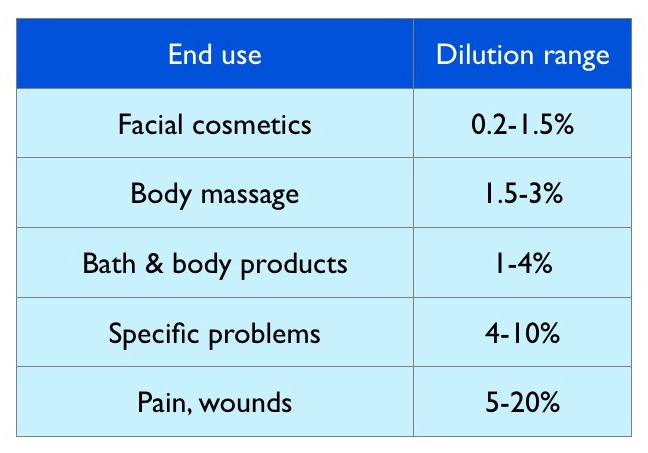Cypress Essential Oil
Our organically crafted Cypress Essential Oil is steam distilled from the brightly aromatic cones, leaves, and twigs of the Cupressus sempervirens trees growing wild in the hills and mountains of Spain. Cypress Essential Oil has a fresh, clean, deep green balsamic aroma with that is herbaceous, spicy, with slightly woody evergreen undertones in the tenacious drydown. Within fragrancing applications and blending work, Cypress Essential Oil is considered a middle note.
Native to Southern Europe, Italian Cypress (Cupressus sempervirens) has spread to North Africa and North America and is cultivated in France, Spain, and Morocco. Cypress trees are long-lived and do not easily decay (thus the Latin name sempervirens - lives forever
); this is perhaps the primary reason why the Greeks chose Cypress wood to sculpt statues of their immortal gods. Its natural chemical composition makes Cypress Essential Oil widely used within skin and hair care, holistic wellbeing, massage, soap making, fragrancing and cleaning applications intended to support wellness and a healthy environment.
PART USED Branches and Leaves
SYNONYMS Cupressus sempervirens L.
COMMON NAMES Mediterranean Cypress, Italian Cypress, Tuscan Cypress, Persian Cypress, Pencil Pine
EXTRACTION METHOD Steam Distilled Essential Oil
ORIGIN Spain
NOTE CLASSIFICATION Middle Note
REPORTED BENEFITS AND USES
Along with helping to encourage healthy circulation, Cypress Essential Oil is a lovely choice when looking to ease unwanted muscle spasms as well as to reduce the presence of unwelcome bacteria. Cypress Oil is an effective astringent and is well suited for inclusion in facial toners, after shaves and other applications that benefit from astringency. Cypress contains monoterpenes, making it beneficial for oily skin conditions. It is also a good choice for inclusion within natural deodorant formulations and formulations intended to help balance oily skin and hair. Cypress Essential Oil can also help in keeping homes fresh and clean when added to household cleansers.
Cypress Essential Oil is also recommended for inclusion in blends formulated to bring ease and relief in the instance of spasmodic coughing, or to help open the airways in the early onset moments of a minor asthma attack. Cypress Oil deepens and expands the breath and is very beneficial to use in your diffuser or formulations in times of stress.
Emotionally, Cypress Essential Oil is a gently stimulating, uplifting essential oil that is ideal for aromatherapy, massage, wellness and soap making applications intended to energize and uplift the body and mind. Cypress Oil is also a welcome support during periods of situational anxiety and depression.
How to Use Essential Oils Safely
General Safety Guidelines
Essential oils can be safely used to enhance wellbeing and as part of a healthy lifestyle. They are used by millions of people every day, most of them without incident. However, essential oils are powerful substances and can be harmful if not used with due care and diligence. The essential oil in a bottle is 50-100 times more concentrated than in the plant, and safety issues apply to essential oils that do may not apply to the whole plant or herbal extract.
There is a lot to know about essential oil safety, and this page only encompasses general safety guidelines.
If you are currently experiencing and adverse reaction to essential oils, please view the First Aid Guidelines.
Topical use and dilution
Do not apply undiluted essential oils to your skin. It’s that simple. The most common adverse reaction, experienced by hundreds, possibly thousands of people every year, is a skin reaction, and the most common cause is using an undiluted essential oil. Generally, the reasons for doing this are either (1) ignorance: no-one told you this wasn’t a good idea, or (2) someone told you that it was a good idea, and that it was safe.
Above is a Table with general guidelines for the dilutions of essential oil that are commonly used in different scenarios. For children, see the chart below under “Children”. Here is a Dilution Guideline Chart for your use.
Some essential oils, such as lemongrass, clove or cinnamon bark, are more likely to cause skin reactions than others. However, people frequently have bad reactions to essential oils that are relatively safe because they are used undiluted (see database). This is not because these essential oils contain impurities. The same companies that tell us genuine essential oils can’t cause adverse reactions are the same brands causing most of the reactions. The simple fact is, dilution and risk are directly linked, and this is a well-known phenomenon in dermatology and toxicology.
If you have an allergic reaction to an essential oil, your immune system has been primed, usually for life, so you might need to avoid that oil indefinitely. Click here for Adverse Reaction Reports featuring allergic contact dermatitis. Irritation is different, does not involve the immune system, and usually happens from improper use. Click here for Adverse Reaction Reports featuring irritant contact dermatitis. For more information on irritant and allergic skin reactions to essential oils, read our detailed description here.
Baths Perhaps even more important, do not put drops of essential oil into a bath and then step into it. Essential oils do not mix with water, they float in tiny droplets on the surface, and you are about to sit on those droplets of undiluted essential oil. Whenever essential oils are ‘mixed’ with water without a dispersing agent, there is a risk of irritation, since undiluted droplets of essential oil attach to the skin, often in sensitive areas. Because the oils are warmed up by the water, and also cannot evaporate, they often sting like crazy. Click here for Adverse Reaction Reports featuring bath and washing products. Therefore, essential oils always need to be fully dispersed in and appropriate base before being added to a bath.
Perhaps even more important, do not put drops of essential oil into a bath and then step into it. Essential oils do not mix with water, they float in tiny droplets on the surface, and you are about to sit on those droplets of undiluted essential oil. Whenever essential oils are ‘mixed’ with water without a dispersing agent, there is a risk of irritation, since undiluted droplets of essential oil attach to the skin, often in sensitive areas. Because the oils are warmed up by the water, and also cannot evaporate, they often sting like crazy. Click here for Adverse Reaction Reports featuring bath and washing products. Therefore, essential oils always need to be fully dispersed in and appropriate base before being added to a bath.
We have put together a Bath Safety page, listing suitable dispersants and how to use them, as well as explaining why substances such as Epsom salts or milk do not work.
Ears
Undiluted essential oils should not be dripped into the ears, but diluted essential oils may be placed on a cotton wad for partial insertion.
Eyes
Do not drip undiluted essential oils into eyes as this will cause a chemical burn and may result in temporary blindness. Diluted essential oils may be used close to the eyes. More here.
Oral ingestion
Do not ingest essential oils unless advised to do so by a practitioner who is qualified/licensed to prescribe essential oils in this way. Taking essential oils orally engages many areas of risk that other modes do not. Do not take essential oils either undiluted or in water, as there is a risk of mouth/stomach irritation. This is similar to what happens in a bath (see above) except that mucous membrane tissue is more sensitive than skin, yet our gut only sends out pain signals when erosion has progressed quite far. Essential oils are widely used in food flavorings, and GRAS status for many essential oils applies to food flavoring use, but it specifically excludes medicinal use. One or two drops of most essential oil can be safely taken in a day, but more than this is not recommended.
Inhalation and diffusion
It is not advisable to directly and intensively inhale essential oils for longer than 15-20 minutes, such as with steam inhalation. However, this does not apply to ambient inhalation from essential oils vaporized into the air. If you are diffusing essential oils, it makes more sense to do this intermittently than constantly, all day long. Ideally, diffuse essential oils for 30-60 minutes on, then 30-60 minutes off. This is not only safer, but it’s also more effective as both our bodies and our nervous system habituate to essential oils after this period of time. Whenever you are using or diffusing essential oils, some air exchange (fresh air) is advisable.
Asthma
Although perfumes have been known to exacerbate asthma, this has never been recorded for an essential oil. However, anecdotal accounts suggest that individuals with asthma may find that certain essential oils trigger an attack.
Naked flames
Essential oils are flammable, and should not be used in any way that involves close proximity to a naked flame or similar fire hazard. Essential oils are not explosive, and they are safe when used in a diffuser, but there is some degree of risk. Burners that are lit with a candle flame are not recommended, but fragrant candles are safe.
Children
Keep essential oils in a place where young children cannot reach them, and never let them handle essential oils bottles. Even two-year old kids have been known to unscrew caps on essential oil bottles and drink the contents. The fact that the bottle contains an orifice reducer helps a little, but young children are used to sucking liquids. This usually results in a visit to the emergency room. While the end result is rarely fatal, every year there are some very close calls. To help prevent such accidents, all essential oils should be sold in bottles with child-proof caps. Of course this doesn’t always work, but it does make a difference.
Above is an age-related Table for recommended dilutions. For the three younger age groups (up to age 6) this applies to any topical application. For the older two age groups (6 to adult) the percentages are for full-body applications. More concentrated dilutions can be used for local applications (small areas of skin). Here is a Dilution Guideline Chart for your use.
Contraindications
If you have a skin condition, are pregnant, have epilepsy or asthma, are on a course of treatment with prescribed medication, or are in any doubt about any condition you may have, you are advised to seek the advice of a doctor or suitable practitioner before using pure essential oils.
This is a set of general safety guidelines to help you use essential oils with minimal risk. And remember, risk and hazard are two different things to consider.
Share this Product
- choosing a selection results in a full page refresh






